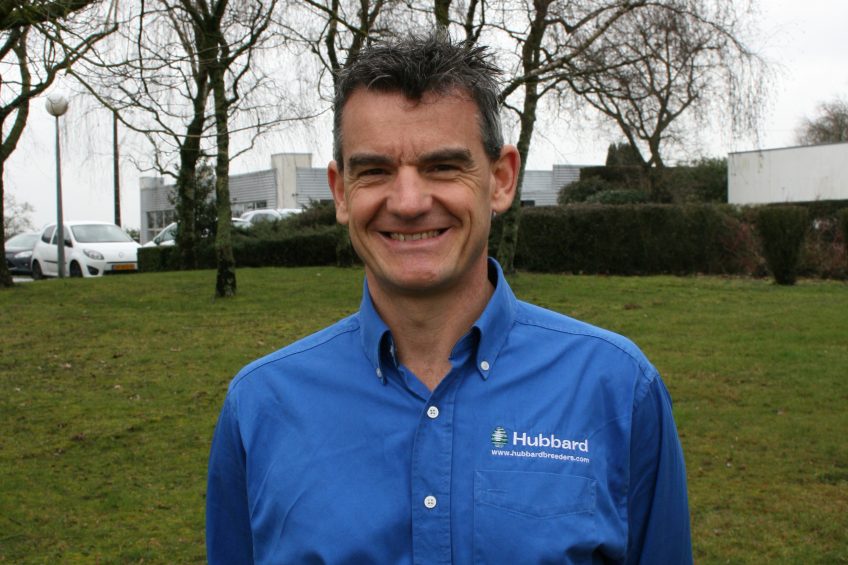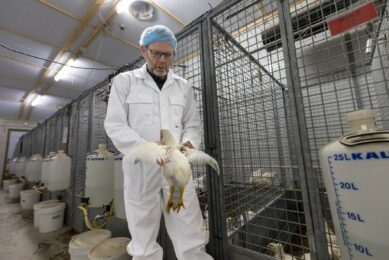How Hubbard has capitalised on slower-growing breeds

The broiler meat market in the developed world is changing, at an extremely fast pace in some countries and a somewhat more relaxed fashion in others. “Slower growing birds are the trend. There are many ways of ‘slower’, many niches. We want to have birds that fit every niche”, said Olivier Rochard, CEO of Hubbard at the second Hubbard Premier Forum.
Parallel to conventional broiler production, there has always been a part of production going in another direction. Small scale farming or local breeds had their own niche in the market, even before large scale industrialised production. The French Label Rouge or Poulle de Bresse are just 2 examples. However, slower growing broilers production took off in recent years.
Consumer demands
Mr Rochard: “Consumers demand more animal welfare, no antibiotic usage and are especially fed up with the more and more common problem of meat defects. If it is spongy fillets, white striping or wooden breast, this is just not accepted anymore. The answer to all these issues is the slower growing bird.”
‘’We see changing concepts as a reaction of changing demand. Our consumers have changed and as a response retailers are translating these demands to producers,” says Paul van Boekholt.
The move to slower growing birds
He knows for a fact that the change to slow growing isn’t a slow process. “2 years ago, during our first forum, we discussed how the 2013 plan of the Chicken of Tomorrow would be rolled out in the Netherlands. At that time about a third of the Dutch fresh chicken market had already changed to slower growing and it was expected that the rest would follow up to the year 2020. Now, in 2017, all fresh poultry meat in Dutch supermarkets is from slow growing birds.” Rochard adds: ‘’2 years ago we tried to make an estimated prediction, now we can look back. Looking forward now, I see the developments with the Global Animal Partnership (GAP) in the US and the 5 step programme of Whole Foods. It is difficult to say how this will work out and in what timeframe, but I know for sure that we are at the beginning of some really exciting times. We must cater to the demands of the already committed food companies, supermarkets and restaurant chains. They made a promise to their customers.”
Its not about higher costs its about higher added value
Poultry producers that look to see if slower growing birds are something to venture into often ask themselves what the added costs are of less birds per square meter, building covert outdoor access, slower growth and higher feed conversion rates. “That is the wrong starting point. It is not about higher cost, it is about a higher added value. In developed countries the consumer will pay for the difference in cost level,” according to Mr van Boekholt.
Costs of conventional poultry v slow growing
Economist Peter van Horne did the math and looked at existing slower growing concepts. Van Horne: “We have to keep in mind that within Europe there is only a 5% difference in cost price in conventional production. When it comes to a comparison with third countries like Brazil and Ukraine, there is a gap of up to 30%. Europe cannot compete with that, making the argument for changing to slower growing more sensible.” He continues: “When comparing conventional and slower growing within the EU, the data shows that both the gross margin per square meter per day and the income of the farm which switched to slower growing stays intact. The extra cost are compensated by a higher retail price for breast meat (+1,50 euro’s/kg) and better valuation of whole birds and cut ups.”
Hubbard to become a subsidiary of Aviagen Group
Aviagen has signed an agreement to purchase Hubbard Breeders, the broiler genetics division of Groupe Grimaud. The agreement between the 2 companies was signed on 31 July 2017 and will be concluded later this year.
As part of the agreement, Hubbard will operate as a wholly owned subsidiary of Aviagen Group, under the direction of Aviagen CEO Jan Henriksen. It will remain an independent broiler breeding company with separate breeding and commercial activities, and will continue to be headquartered in France.
Aviagen CEO Jan Henriksen: “Hubbard’s diversity of genetic products and in-depth expertise in the different segments of the broiler breeding market will greatly contribute to Aviagen`s expanding product line offerings.”
Join 31,000+ subscribers
Subscribe to our newsletter to stay updated about all the need-to-know content in the poultry sector, three times a week. Beheer
Beheer









 WP Admin
WP Admin  Bewerk bericht
Bewerk bericht